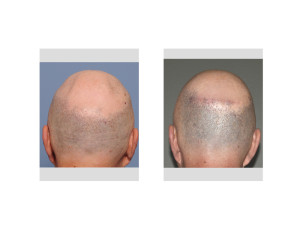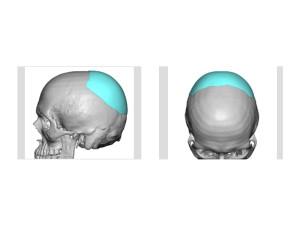Background: The normal rounder shape of the skull can be altered for a wide variety of reasons. One of the most common reasons for skull deformation is congenital or genetic. Usually this affects one or several of the cranial sutures creating a variety of fairly classic skull shape deformations. But there are a whole host of other skull deformities that are not so easily explainable as that of craniosynostosis.
The skull is prone to a variety of indentations, raised areas and other contour deformities that defy an exact explanation as to why they are there. Such is the case of the bilateral occipital skull indentation deformity. I have seen this specific type of skull contour deformity several times and have no explanation for its presence. It is as if the back of the head was placed in a vise during development creating two symmetric flat spots. It is the symmetry of the flat spots that defies a specific developmental explanation.
For men that shave their heads or who have significant hair loss, a smooth skull contour takes on great significance. An otherwise known skull shape or contour issue is acceptable when one has hair or wears a hair piece. But once the scalp is clearly seen the shape of the skull takes on great significance.



Highlights:
1) Bilateral dents or indentations in the skull are usually formed by their natural development whose origins are unclear.
2) Bilateral occipital dents are rare and are best treated by an overall augmentation of the back of the head.
3) A custom skull implant for coverage the deformed portion of the occipital skull can be made from a 3D CT scan.
Dr. Barry Eppley
Indianapolis, Indiana




